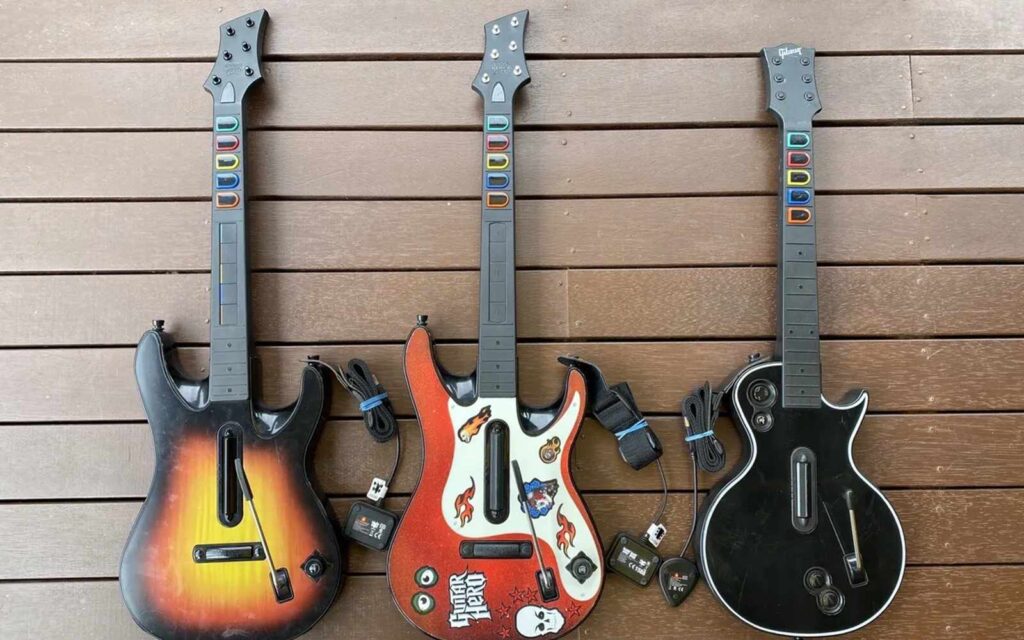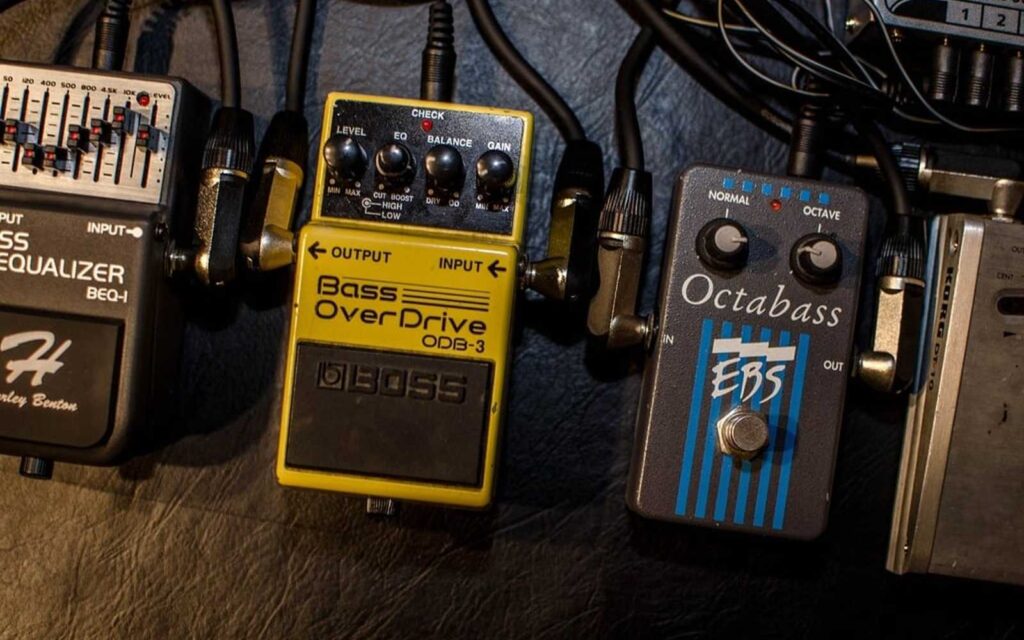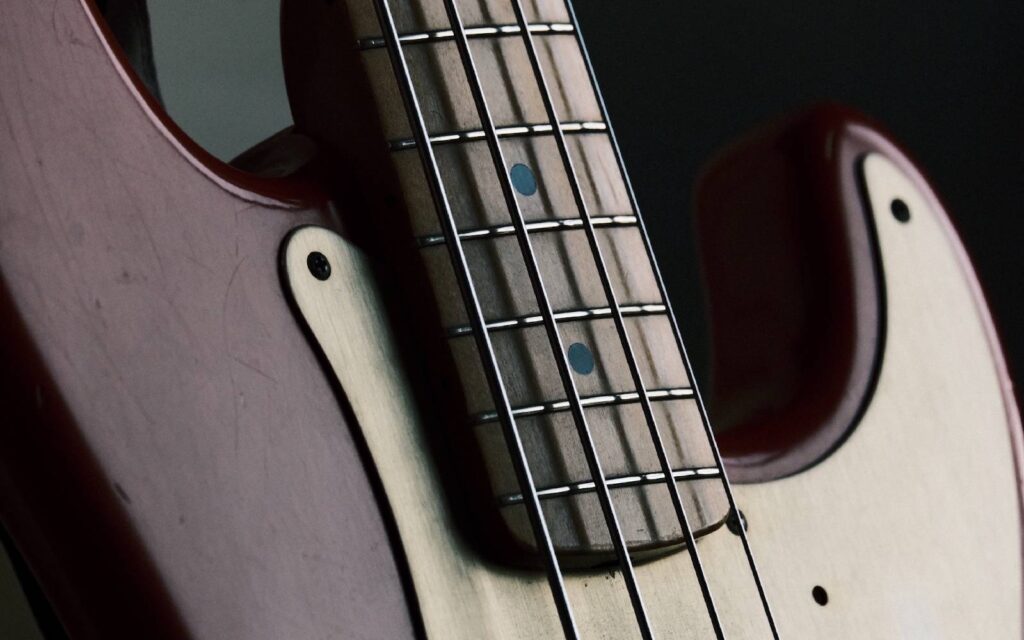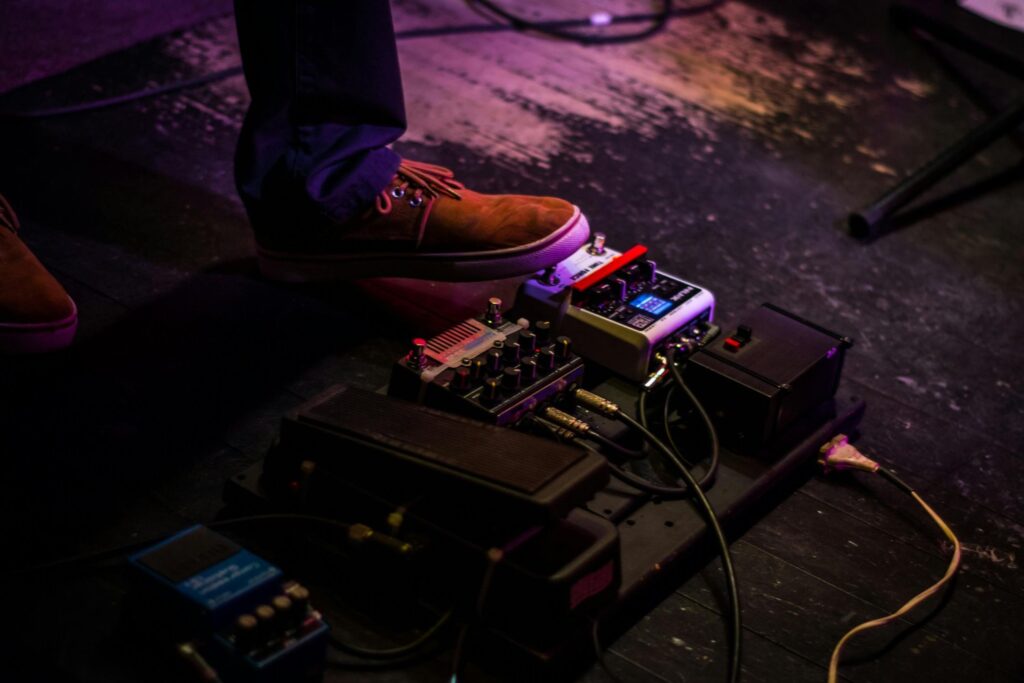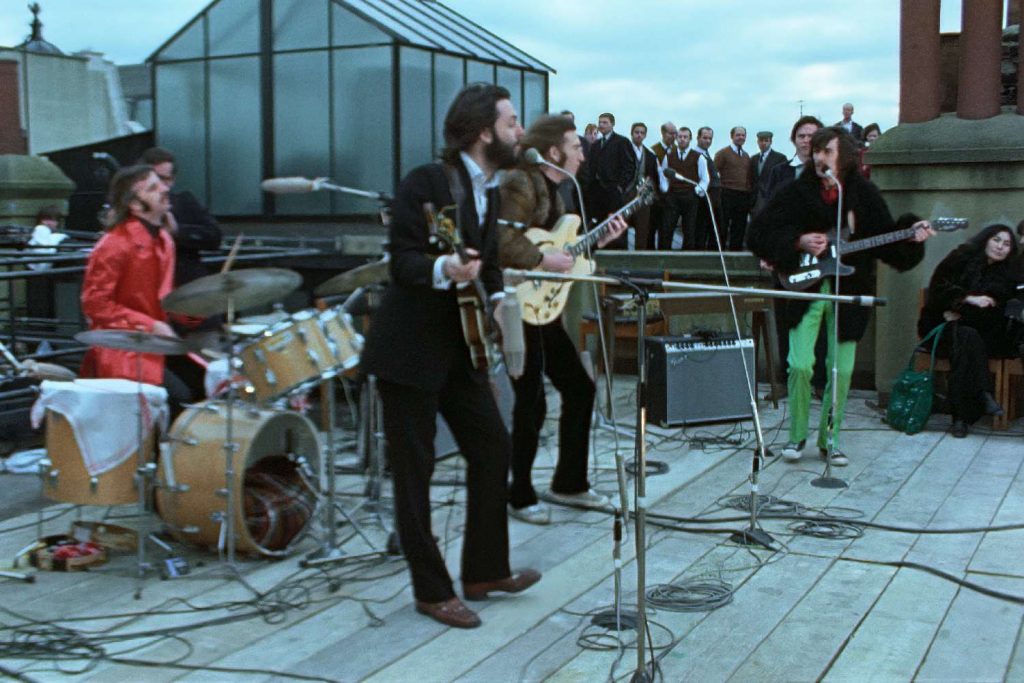Leo Fender didn’t play guitar, was half blind and mostly deaf.
But he created one of the most legendary guitar brands to shape music and soundtrack our lives. His background was not musical (although he studied piano as a kid and played sax in his high school band) or as a luthier.
A qualified electronics technician, Clarence Leonidas “Leo” Fender set up Fender’s Radio Service in late 1938, in Fullerton, California. He repaired radios, phonographs, amps and PAs. It was his irritation with design flaws of amps that he started building his own, later adding guitars.
Read all the latest product & music industry news here.
The Fender Musical Instruments Corporation came into being in 1946. The reason it’s lasted this long – 78 years this year – is that unlike many of his competitors, Fender made his products for players of a wide range of styles.
Leo died on March 21, 1991, at the age of 81.
A = ANGELS
A deeply religious man who also tuned into the magic of music, Leo believed all artists were angels, and it was his “job to give them wings to fly.”
B = BOATS
His flair for musical instrument design saw a Bay Area boat company employ Leo as a design consultant for the boats they built.
Leo was passionate about boats He owned three, went cruising almost every weekend in Catalina Island in California, and took his second wife Phyllis on a 17-day cruise on their honeymoon.
C = CBS
In January 1965 due to being diagnosed with Parkinson’s Disease, Fender sold his companies to the Columbia Broadcasting System (CBS) for $13 million ($126 million in 2024 money).
The CBS era was seen as a reduction in quality (and less collectible today) due to company cost cutting.
But at the same time, there were changes during this era. CBS added larger headstock shapes on some models to make the logo stand out onstage.
Bound Necks
Bound necks with block shaped position markers arrived in 1966. Some amp models got aluminium face plate with blue or red decals, and “silverface” amps added an aluminium trim detail around the speaker grill, which was in one piece until 1972.
New products included the Starcaster, with a shallow, yet semi-hollow body design that retained the Fender bolt-on neck but with a different headstock.
It housed two Fender Wide Range humbucker pickups with chrome covers with a three-way toggle switch and five silver-skirted black control knobs: neck pickup volume, neck pickup tone, bridge pickup volume, bridge pickup tone and master volume.
The Starcaster failed to trigger sales at the time, and was discontinued in 1980 after four years. But it was revived in 2013 with “entry level” price after demand reignited because of its solid build, tone and feel.
Fans included Radiohead’s Jonny Greenwood, Killer’s Dave Keuning, Depeche Mode’s Martin Gore, Morrissey and Alanis Morissette guitarist Jesse Tobias, Jamie Cook of the Arctic Monkeys and Death Cab For Cutie’s Chris Walla.
D = DEAF
Leo lost his most of his hearing when he had his head in an amplifier he was trying to fix, and someone turned it on.
E = EYE, GLASS
Leo had a glass eye after it was damaged when he got a tumour at the age of eight.
F = FINTER
The brand may have been called Finter Guitars. His great-great x 6 grandfather Hans Finter arrived in America from Germany and changed his name.
G = GUITAR HEROES
Among them: Muddy Waters, Jimi Hendrix, Eric Clapton, Jeff Beck, George Harrison, Keith Richard, Jimmy Page, Kurt Cobain, Bob Dylan, Buddy Holly, Eric Johnson, Mark Knopfler and Bruce Springsteen.
H = HAWAIIAN
Leo was a big fan of Hawaiian and country and western swing. When America annexed Hawaii, it initially banned the native community from performing its music, dances, singing and surfing.
As a result, in the early 19th century, Hawaiian musicians moved in droves to the mainland where they found popularity. They took with them the lap steel guitar, which they had invented, and the ukulele which Portuguese sailors brought to the islands, both which had a big impact on blues and country sounds.
In 1945, Fender began producing Hawaiian lap steel guitars like the “Champion” which incorporating a patented pickup Leo designed and amps sold as sets.
I = INVENTIONS
Despite the legend, Leo Fender didn’t invent the electric guitar – that is attributed to music teacher and singer Paul H. Tutmarc in the 1930s.
But he’s the father of the modern electric guitar by mass producing it as reliable product which was louder and exciting, and making it uber-popular.
Same thing with the electric bass. Tutmarc invented the fretted and solid-body Audiovox Model 736 Bass Fiddle in the mid 1930s with a bass amp called the Audiovox Model 936. But it was Fender’s solid body 4-string Precision Bass (1951), which became the most sold and imitated electric bass and shaped the sound of rock.
Electric Pickups
Fender innovations came via the Stratocaster and its three electric pickups, vibrato controls, the Jazzmaster with the pickup circuit featuring unusual “roller” thumbwheel controls and a slide switch at the upper neck end of the pickguard, use of magnets with beveled edges for the Stratocaster pickups for better tones, and popularised the use of nitro lacquer which the automobile industry began using since the 1920s.
J = JAZZMASTER
Out in 1958 with a space-age look and the first Fender guitar to replace the maple fingerboards with rosewood, the Jazzmaster featured a floating bridge, anchored tailpiece, longer tremolo arm, and unique ‘soapbar’ pickups unlike other single coil pickups.
With a mellower jazzier feel, it was designed for blues and jazz players who wanted to sit down while performing. But it was more popular with surf-rock bands instead because of its warm sound.
Today its different resonance and less sustain makes it attractive to alt-rock names as Elvis Costello, Troy Van Leeuwun, Patti Smith, Thom Yorke, Ryan Adams, J Mascis and Chelsea Wolfe.
K = DOC KAUFFMAN
Doc Kauffman was a lap steel guitarist, electric guitars designer for Rickenbacker, and inventor (he patented the guitar vibrato in 1932) who was an influential early business partner of Leo Fender’s.
Leo would later say, as per Guitar.com, that if they hadn’t met, “I’d probably have maybe two or three radio stores or TV repair shops” and “If it hadn’t been for Doc kind of pushing me into it, I probably wouldn’t have gotten into the guitar business.”
They teamed up as inventors in 1941, using the $5,000 licensing fee sold for a record changer they designed, to set up a company K&F in 1945.
Lap Steel
It built amplified Hawaiian guitars and a lap steel guitar “with an electric pickup I designed”, Leo said.
But K&F was going through so much of their savings, that in February 1946, Doc asked Leo to buy out his half of the business and they parted amicably.
He kept on building and repairing instruments from a home workshop, and gigged until his death in 1990.
L = LES PAUL
At one point, the idea was for the Fender brand to be called the Fender Les Paul.
By the 1940s Les Paul (Lester William Polsfuss) was the most popular electric guitarist at the time, playing with jazz singer Bing Crosby while working on guitars, recorders and delay. Bringing him into the company would have kicked Fender into mainstream success.
Loud
According to Ian S. Port’s The Birth of Loud: Leo Fender, Les Paul, and The Guitar-Pioneering Rivalry That Shaped Rock ‘n’ Roll (2019) Paul didn’t really like the Tele, the sound too bright and sharp for him, and the design was plain.
In any case, his loyalty was with Gibson, whose axes he played. He figured if he was going to manufacture guitars, he should go to the biggest instruments company in the world, which was Gibson.
“Why should I fool around with some guy who is not a musician – I should go to the Gibson people.”
Gibson kept turning down Paul’s proposal of a solidbody guitar even though he told them, “I believe the solidbody guitar is going to be very important,” he told Berlin. “And if you don’t do something, Fender is going to rule the world.” They finally agreed with Paul in 1951 after the Fender Tele became a huge success.
Dominated
The Gibson Les Paul, so powerful and meant to be played super-loud was an instant success story. Port said it dominated Fender… until Jimi Hendrix. Jimi created the most astounding noises from his Strat, utilising every feature in ways not seen before.
Eric Clapton switched to a Fender after he saw Jimi.
M = MARKET SHARE
According to NAMM (the National Association of Music Merchants), Fender has the second largest market share of guitar brands in the United States.
- Gibson: 34%
- Fender: 30%
- Ibanez: 12%
- Yamaha: 7%
- Epiphone: 4%
- Other (includes Ovation, PRS, Charvel, ESP, Jackson, Dean, Washburn): 9%
According to NAMM, electric guitars have a 60% share, compared to acoustic guitars’ 40%.
N = NOWHERE MAN
The Beatles’ use of Epiphone Casino guitars – a budget model after Gibson bought out Epiphone – in the early part of Beatlemania created huge sales for it worldwide, beating even Gibson’s ES-330.
But by 1964, George Harrison and John Lennon switched to the Fender Strat, both 1962 Sonic Blues. That’s them playing off each other in the solo on “Nowhere Man” on Rubber Soul.
It was always Harrison’s guitar of choice. When he was 13, he would be daydreaming in the classroom drawing pictures of the Strat in his notebook. But there were none available in their home city of Liverpool.
He used it as his main on Rubber Soul, Revolver, Sgt. Pepper’s Lonely Hearts Club Band, Magical Mystery Tour, Yellow Submarine, The Beatles, Abbey Road and Let It Be.
Rocky
He later painted the front psychedelia (it was called Rocky) as was seen on the “I Am the Walrus” segment of the Magical Mystery Tour movie.
Lennon used an array of brands, but his Strat was on “Ticket to Ride”, “What Goes On”, “In My Life” and “If I Needed Someone”. He was using a Strat when recording in 1980 in New York City when he was assassinated.
O = ORANGES
Leo Fender was born in Orange County, California, in 1909 when the main industry was oranges. His parents, Clarence and Harriet, had an orange farm and Leo was born in a barn.
P = PRECISION BASS
The Precision Bass appeared in 1951, “a four-string electric bass with a humbucker single-coil pickup,” Leo recalled.
“It was also an answer to bringing volume to the bass. It was slow to catch on at first.”
Upright bassplayers took awhile to warm to it– even though it was easy to play, compact, fretted (hence the name), could be easily heard in a band and didn’t need as many skills as a double bass.
Essential
The sound of the new instrument as essential for rock recordings was substantiated when Bill Black – bassist for Elvis Presley, the biggest entertainment act at the time in the world – was seen playing it in the Elvis’ third movie Jailhouse Rock (1957).
However Black was so frustrated with trying to get to grips with the Precision Bass during the recording of “You’re So Square) Baby I Don’t Care” that he flung it on the floor and stormed out.
A laughing Presley picked up the bass and, the story goes, finished off the session.
Q = QUESTION
Here’s a question for Fenderphiles. Initially, all Fender guitars came in sunburst colour. In 1961, Leo decided to expand to Candy Apple Red, Dakota Red, Fiesta Red, Graffiti Yellow, Lake Placid Blue, Surf Green, Sea Form Green, Sherwood Green, Teal Green and Shell Pink.
Were these colours chosen because:
(a) They were Leo’s favourite colours
(b) It was a deal with a local paint company
(c) They were the most popular colours of cars
The answer is (c). Leo figured guitarists would go for the most familiar. The choices came from the autopaint chart.
R = RENAISSANCE & REVERB
In the mid-60s, Fender released a series of amps which put the company at the forefront, looked impeccably cool and are still considered essential.
In 1963 the Renaissance was considered a game-changer, with multiple smooth reverb and voice-amplifying settings, with built-in effects and an output capability beyond what was offered.
Deluxe Reverb, with a 22-watt power, had a bright and clear sound, with 12″ Jensen® C-12K speaker, two channels (normal, vibrato), four inputs (two normal, two vibrato), tube-driven reverb and tremolo (“vibrato”) and a two-button footswitch.
The 85-watt 65 Twin Reverb is also highly desired,
with dual 12″ Jensen C-12K speakers and 2x channels.
S = STRATOCASTER
With the A1 list of superstars that used the Stratocaster since it arrived in 1954, it was inevitable that it would be present at some of the greatest moments in rock history.
On July 25, 1965, the folk scene’s hero Bob Dylan took to the stage at the Newport Folk Festival to unveil his new “electric” sound.
He was to debut his new “electric” single “Like A Rolling Stone” and drew boos when he plugged in his Strat. “Judas!” shouted an audience member.
The Newport Strat auctioned for $965,000 in 2013.
Monterey
Jimi Hendrix found fame in England before his native America. Paul McCartney contacted organisers of 1967’s Monterey International Pop Music Festival in California and got him on for his US launch.
The three day event included the darlings of the counter culture as Grateful Dead and Jefferson Airplane, and launches of Janis Joplin.
On the evening of Sunday June 18 slot, the Jimi Hendrix Experience took to the stage after being introduced by Brian Jones of The Rolling Stones.
Hendrix’s set, ablaze with loud volume and amazing vibrato and feedback effects, culminated with a rendition of “Wild Thing” during which he “raped” his Strat against his mountain of amps, lay it on the stage, kneeled over it, ceremonially poured lighter fluid over it, set it on fire, smashed it onstage seven times and then threw it into the crowd. The crowd and the critics exploded and Hendrix became a star in America overnight.
T = TELECASTER
On of Fender’s best selling model, the Telecaster, the first mass produced solid body electric, originally came out as The Broadcaster in January 1951.
87 were sold its first month, but the company was forced to change its name because a Gretsch drum models was the Broadkaster.
Fender executive Don Randall came up with the new name, inspired by the new medium called television.
Made up of bits and pieces in Leo’s workshop, the Tele was designed to be adaptable, practical with a single cutaway body and two single-coil pickups.
Paddle A Canoe
Rivals sniffed, “That thing will never sell”, while Leo was asked if he was going to paddle a canoe with it. But it rapidly was embraced by rock, blues and country axemen.
The Telecaster made its recorded debut in July 1956 on Johnny Burnette & The Rock and Roll Trio’s “The Train Kept-A-Rollin”. It first entered the US Top 40 in July 1957 when a young James Burton came up with the riff on Dale Hawkins’ “Suzie Q”.
Green Onion
The Telecaster’s made its first appearance on the Australian charts in 1962 on Booker T & The MGs’ “Green Onion”, named after a cat with that name whose way of walking inspired the riff.
The guitarist on “Green Onion”, which reached #3 in America, was Steve Cropper, who used it on his sessions for hits as Otis Redding’s“(Sittin’ On) The Dock of the Bay”, Eddie Floyd’s “Knock On Wood”, Wilson Pickett’s “In The Midnight Hour” and Sam & Dave’s “Soul Man”.
MGs’ leader Booker T. Jones said of Cropper: “He’s very sound-conscious and he gets a lot of sounds out of a Telecaster without changing any settings — just by using his fingers, his picks and his amps.”
Teens
US bluesman Muddy Waters’ tour of the UK in 1958 was the first time it was seen by British teenagers with names as Clapton, Richards, Harrison, Beck, Page, Summers, Barrett, Gilmour and Townshend.
The first time UK TV viewers saw it was when The Yardbirds appeared in July 1964 on Go Tell It On The Mountain and a short cropped Clapton was seen toting a red one.
The Who’s Pete Townshend started using one as it was cheaper to smash up and repair, due to the cost of his routine of smashing up his axe onstage.
U = UNCLE JOHN WEST
Uncle John inspired Leo Fender’s love for electronics. He ran an auto shop in Santa Maria, California and built his own radio sets.
V = VOLUME OF SALES
During COVID when people were stuck in their homes, Fender estimated that its sales were up 17% and that sales reached $700 million in 2020.
In the turbulence of pandemic restrictions, 90% of its worldwide distributors closed their physical stores, and Fender closed down its plants and put executives and 2,000 staff on 50% wages.
It told CNBC.com that when it offered Fender Play, the online video platform for learning guitar, bass and ukulele introduced in July 2017, it had 100,000 subscribe in the first day, and 500,000 first week.
Nearly 20% of the newcomers were under 24, and 70% were under 45. Female users accounted for 45% of the new wave, compared with 30% pre-COVID.
W = WOODSTOCK
On his awesome set at the Woodstock festival on August 18, 1969, Jimi Hendrix used his 1968 Olympic White Strat “Izabella”.
She had an alder body, two-piece maple neck, with no “skunk stripe” and truss rod adjustment at the heel, and the “F style” neck plate with the serial number 240981.
The set’s highlight was an electric version of the American anthem “Star Spangled Banner”.
With expert use of effects, he created the sound of American bombers dropping bombs on innocent unarmed civilians during the Vietnam war.
Outraged
Middle America was outraged at the performance, equating it with burning the American flag. Hendrix waved away the hysteria, saying on TV that he thought the rendition was “beautiful”.
On the 50th anniversary of Woodstock, Fender celebrated by issuing a limited edition Hendrix Strat. The Olympic White alder body came with a 3-ply Parchment pickguard, a flatsawn maple “60s C”-shaped neck, maple fingerboard, 21 vintage-style frets, three custom hand-wound ’69 single-coil Strat pickups and a three-position blade switch.
X = X MARKS THE SPOT
According to the National Association of Music Merchants (NAMM):
- The average age of guitar players is 30 years old.
- Guitar players are split almost evenly between male and female, with 51% male and 49% being female.
- Approximately 32% of guitar players have been playing for 10 years or more, while 23% have been playing for 5-10 years.
- The most popular genres of music among guitar players are rock (36%), blues (21%), and pop (19%).
- The majority of guitar players (69%) own an acoustic guitar, while 60% own an electric guitar.
- Guitar players tend to be well-educated, with 37% having a college degree or higher.
Y = YEAR
According to the Music Trades Association, global guitar sales reached $17.2 billion in 2020, an increase of 9.5% from 2019.
The US was responsible for $4.4 billion of this total, an increase of 10.7% from the previous year.
Total US guitar sales were expected to reach $1.8 billion by 2023
Total US guitar sales are expected to reach $1.8 billion by 2023
CBS paid $13 million for Fender in 1965, but only $11 million for the New York Yankees two years before.
Z = ZEPPELIN, LED
In 1966, when Jeff Beck gave Jimmy Page a ’59 Telecaster as a present, he turned it into a swirling dragon image in green, orange, yellow, blue and red in Japanese imagery.
It went with the dragon imagery on his stage costumes, briefly adding eight circular mirrors to it.
But he got rid of the mirrors. According to Fender, he repainted the axe, and “replaced the black pickguard with a transparent acrylic one and inserted a sheet of diffraction grating film, which created a spectrum of colors when hit by light.”
“I really made it my own, so it was like no other Telecaster,” he said in a 2014 interview with Wondering Sound. “I felt that it was like a consecration. It’s quite a magical guitar.”
It was his main instrument with Led Zeppelin, using it for the solo on “Stairway To Heaven”.
Problem
But a problem with a pickup meant he switched to a ’59 Les Paul (bought from Joe Walsh) on a US tour.
When he got back to England, a friend had repainted it as a favour – much to Page’s annoyance.
“His paint job totally screwed up the sound and the wiring, so only the neck pickup worked,” he told Guitar World in 1998.
“I salvaged the neck and put it on my brown Tele (string bender that I used in the Firm [in 1985 and 1986) As for the body, it will never be seen again!”
Read more from the horse’s mouth (maybe an extra addition for “H”) at Fender here.


